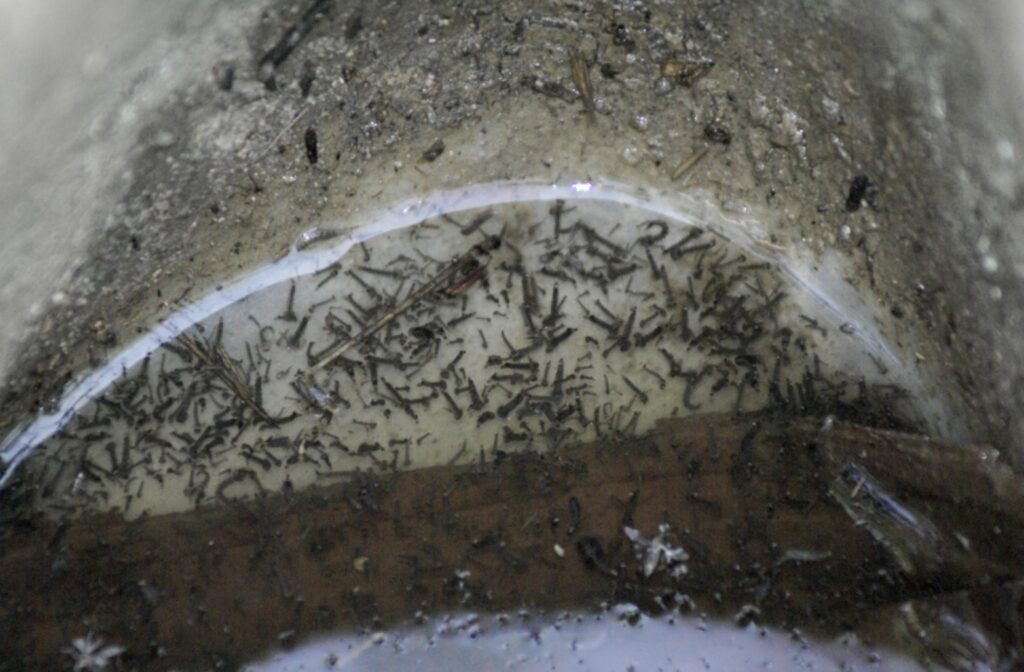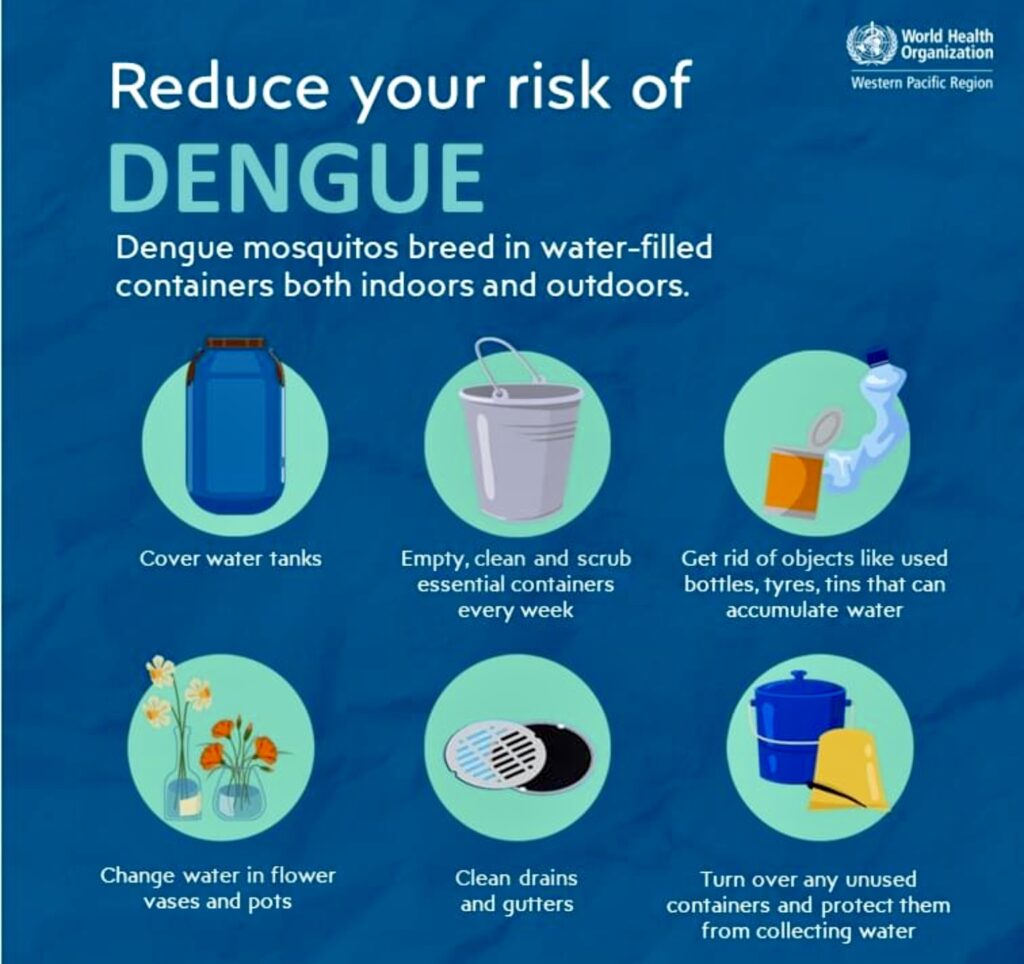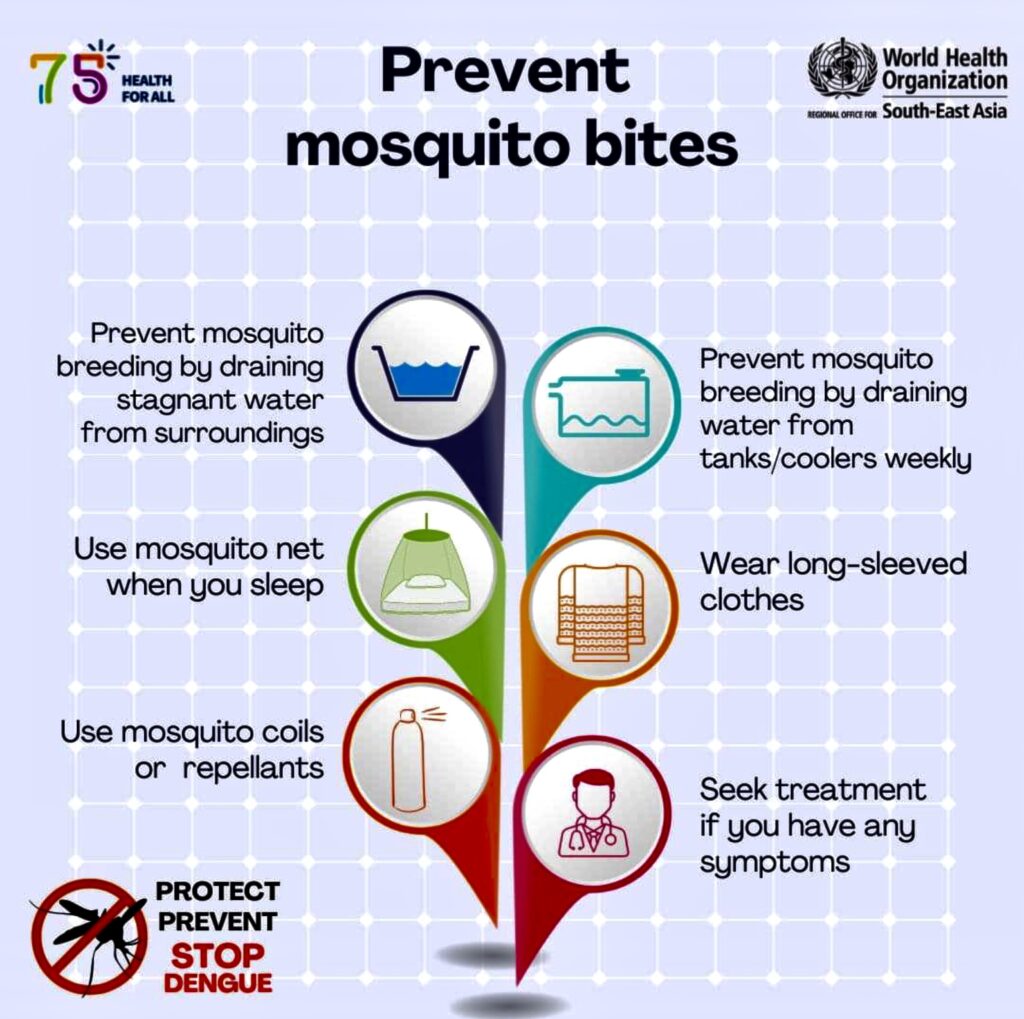By Henrylito D. Tacio
After two days of rain, six-year-old Jenny came down with a fever. Her mother, Esther, noted that Jenny had lost her appetite and that her skin was flushed, but wasn’t particularly concerned. She gave her paracetamol, which she believed would help the temperature to subside. The fever vanished the following day, but returned the next.
Seven days after the symptoms first appeared, Jenny became drowsy, was breathing rapidly and had a racing pulse. Suddenly, she began to vomit blood. Esther rushed her daughter to a hospital where a doctor administered blood transfusions, but it was too late. The little girl died soon afterwards.
Jenny was a victim of a virulent form of dengue, a mosquito-borne contagion that’s rapidly becoming one of the country’s health problems.

“Before, if it is the rainy season, we think that dengue is rampant, but this time, dengue is all year round,” Dr. Annabell Yumang, the director of the regional office of the Department of Health in Davao Region, told the media during a weekly forum in Davao City. “Every month, we now have dengue cases.”
Now, the good news. Dengue cases from January 14 to 27 this year was 7,434, based on the data available from the Department of Health. There was a slight decrease when compared to the January 1 to 13 statistic, which tallied to 8,368 cases. A subsequent decrease was also observed from January 28 to February 10, with 5,267 cases.
Two types
Actually, there are two types of diseases caused by dengue virus (DENV). The classical dengue fever has been known for more than 200 years and is now resurging. The other new entity, dengue hemorrhagic fever (DHF), emerged in 1953 in Manila, and in 1958 in Bangkok.
More than 90% of the recorded deaths are in children under 15. “Dengue is a big problem among children because it is a major cause of illnesses and deaths,” says Dr. Lulu C. Bravo, a professor of infectious and tropical diseases.
Approximately 5% of all DHF cases are fatal. Without proper treatment, DHF fatality rates reach 15% more. “Although dengue is rarely lethal, its contribution to disease and ill health, especially among young children, should make dengue control a primary public health concern,” said Dr. Dominic Garcia, an infectious disease specialist.
Symptoms

The symptoms of the classical dengue are now familiar to most people situated in areas where the disease is most widespread. It usually starts suddenly with a high fever with chills or chilly sensations. Headaches, pain on moving the eyes, backache and muscle and joint pains are also common.
“Extreme aching in the legs and joints occurs during the first hours of illness,” explains The Merck Manual of Medical Information. “The temperature rises rapidly to as high as 40 degrees Centigrade, with relative bradycardia (heart beating less than 60 beats a minute) and hypotension (abnormal condition in which the blood pressure is too low for normal functioning). Fever and other symptoms of dengue persist for 48 to 96 hours, followed by rapid dropping of fever with profuse sweating.”
A rash usually appears 3 to 4 days after the start of the fever. The illness can last up to 10 days, but complete recovery can take as long as a month. Older children and adults are usually sicker than young children.
Severe dengue
DHF is a potentially deadly complication that is characterized by high continuous fever (40-41 degrees Celsius) lasting 2-7 days that may be accompanied by loss of appetite, nausea, vomiting, abdominal pain, and subsequent evidence of bleeding like persistent red spots on the skin, nose or gum bleeding, coffee-ground vomit, and dark stools. The patient can go into shock (referred to as dengue shock syndrome).
In moderate DHF cases, all signs and symptoms abate after the fever subsides. In the worst cases, parents are advised to watch out for these danger signs: restlessness, cold clammy skin, sudden abdominal pain, having difficulty in breathing, and behavioral change.
Most people equate DHF with influenza and similar flu-like diseases. “There is usually a rash in dengue, while there is none in flu,” says Dr. Allan Schapira, an epidemiologist. “Fever caused by dengue tends to last almost a week, while that of flu disappears after 3-5 days.”
According to Dr. Schapira, “Children are much more likely to get DHF than adults. This is the reason why children are much more at risk of dying. In adults, dengue fever usually does not develop to the severe form.”
Until now, there has been no specific treatment for dengue infection. However, early detection and access to appropriate healthcare for case management can reduce mortality, as can rapid detection of severe dengue cases and timely referrals to tertiary healthcare facilities.
“People with these severe symptoms, admission is necessary,” said Dr. Lulu C. Bravo, a professor of infectious and tropical diseases. “The patient is subjected to regular blood test monitoring until stable. Fluids are carefully computed and monitored plus as soon as needed, blood or blood components are transfused.”

Dengue serotypes and vectors
DENV has four serotypes: DENV-1, DENV-2, DENV-3, DENV-4. “Infection with one serotype provides long-term immunity to the same serotype, and only transient immunity to the other serotypes, after which secondary infections with a different serotype increase the risk for severe dengue,” says the World Health Organization (WHO).
DENV is transmitted to humans through the bite of infected mosquitoes. The primary vectors that transmit the disease are Aedes aegypti and, to a lesser extent, A. albopictus mosquitoes.
Not all Aedes mosquitoes, however, are carriers of DENV, but only those that have bitten people infected with dengue fever. It takes about 8-10 days for the virus to multiply in the female mosquito’s salivary gland before the insect can transmit the virus to human beings.
Since Aedes mosquitoes are most active at dawn and dusk, personal protective measures are recommended particularly at these times of day. “Personal protection measures and mosquito control should also cover workplaces and schools since the vectors are day-biting mosquitoes,” the WHO said.
Best protection
The solution against dengue is not to be bitten by the mosquito carrying the virus. According to Dr. Willie T. Ong, there are several things you can do about that. “There’s no need to panic (when it comes to dengue) because we have 10 ways to beat dengue,” says the 2007 recipient of the Outstanding Filipino Physician award from the Department of Health.
1. Clean up your backyard. Mosquitoes love to stay in the dark and damp areas. If your garage is littered with boxes and assorted garbage, clean them up or throw them away. Don’t let them become mosquito havens. Schedule a weekend clean-up day.
2. Empty containers with stagnant water. The dengue-carrying mosquitoes breed in stagnant water. This means that flower pots, garbage cans, aquariums, unused swimming pools, tires and other piles are potential breeding grounds for mosquitoes. So, after the rain fills them with water, throw the water away. Next time, keep these containers closed and upside down. Flower vases should also be replaced weekly.
3. Check your surroundings for stagnant water. Some ornamental plant leaves have this “whorl” or cup-like shape that can hold water. Beautiful to behold but deadly in design. Turn them over and throw the water away. Upturned coconut shells are also notorious for holding water. Non-moving rivers, especially in squatter areas, are full of mosquito eggs.
4. Close your doors and windows. Some people open their doors in the morning for a whiff of fresh air. They also believe that mosquitoes would leave the house and go into the sunlight. “But my advice is to keep your doors shut at all times,” he advises. If it’s too stuffy, then place a screen door that keeps the flies and mosquitoes outside.
5. Spray insecticide regularly. To rid your house of mosquitoes, flies and cockroaches, spray insecticides every few days. Make sure you spray those dark corners, crevices, and cabinets. You’ll be amazed at the number of pests you’ll find dead in the morning. Just make sure that household members are not exposed to the insecticide as they are not the target. Just spray selected rooms when people are not around.
6. Wear pants, pajamas, long sleeves, and socks. Mosquitoes are attracted to your breath as you exhale so they know how to reach you even in the dark. “I guess they love bare, plump skin, especially the kids who don’t shoo them away and let them suck as much blood as they want,” Dr. Ong believes.
7. Apply insect-repellants or use mosquito nets. If your kids are going hiking, camping or off to school, you can apply insect-repellants like Off-Lotion. Kids like to play outdoors and are prime targets of these mosquitoes. You can wipe it on selected areas of the clothing like collars, sleeves, and pants. Avoid applying lotion on the eyes, mouth, or hands.
8. Kill those mosquitoes. When it comes to dengue, it’s either kill or be killed. Instruct everyone to kill as many mosquitoes and flies as they can. Once you’ve got them trapped in your room, show no mercy. Mosquitoes belong to the forest, not in your home.
9. Involve the whole community. The best way to defeat dengue is if the whole community is aware of the threat. Ask your community leaders to schedule a clean-up day. The danger is in those empty houses and lots, which are excellent breeding places for mosquitoes. Become a volunteer to monitor and clean up your surroundings.
10. Spread the word: Dengue fever is here. You’ll never know where dengue will strike next so better be prepared. Inform your neighborhood. – ###








